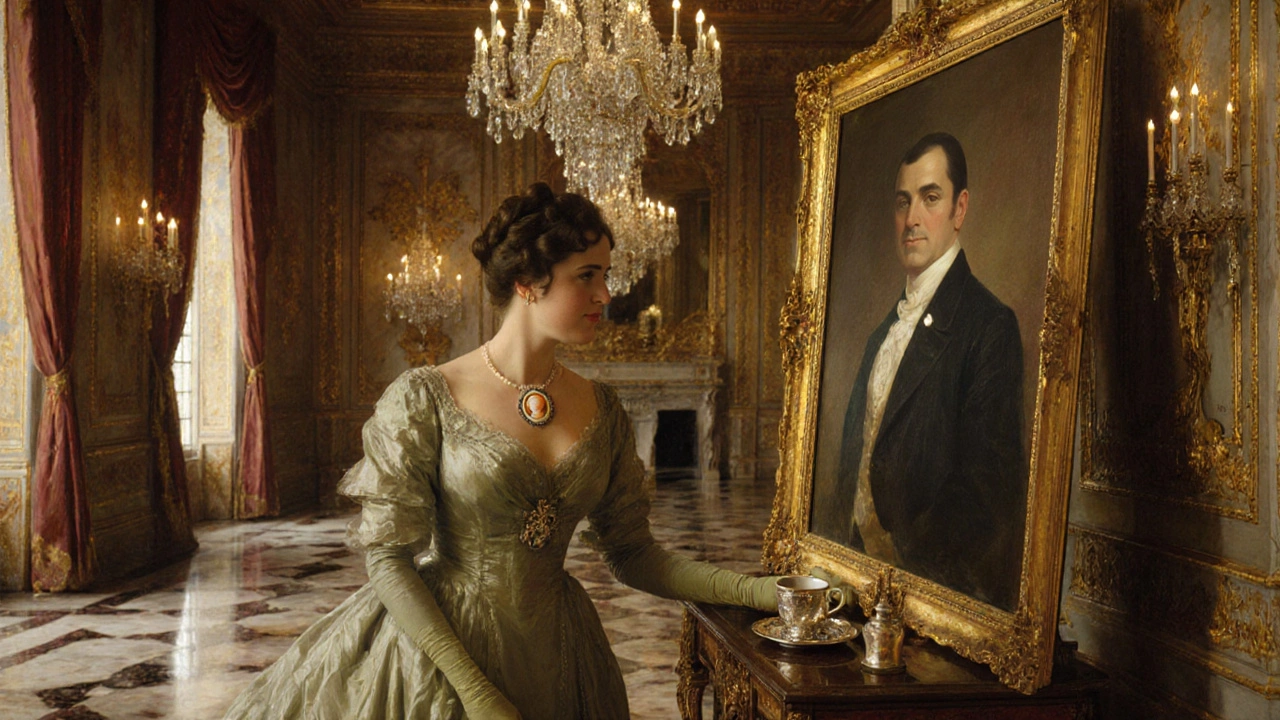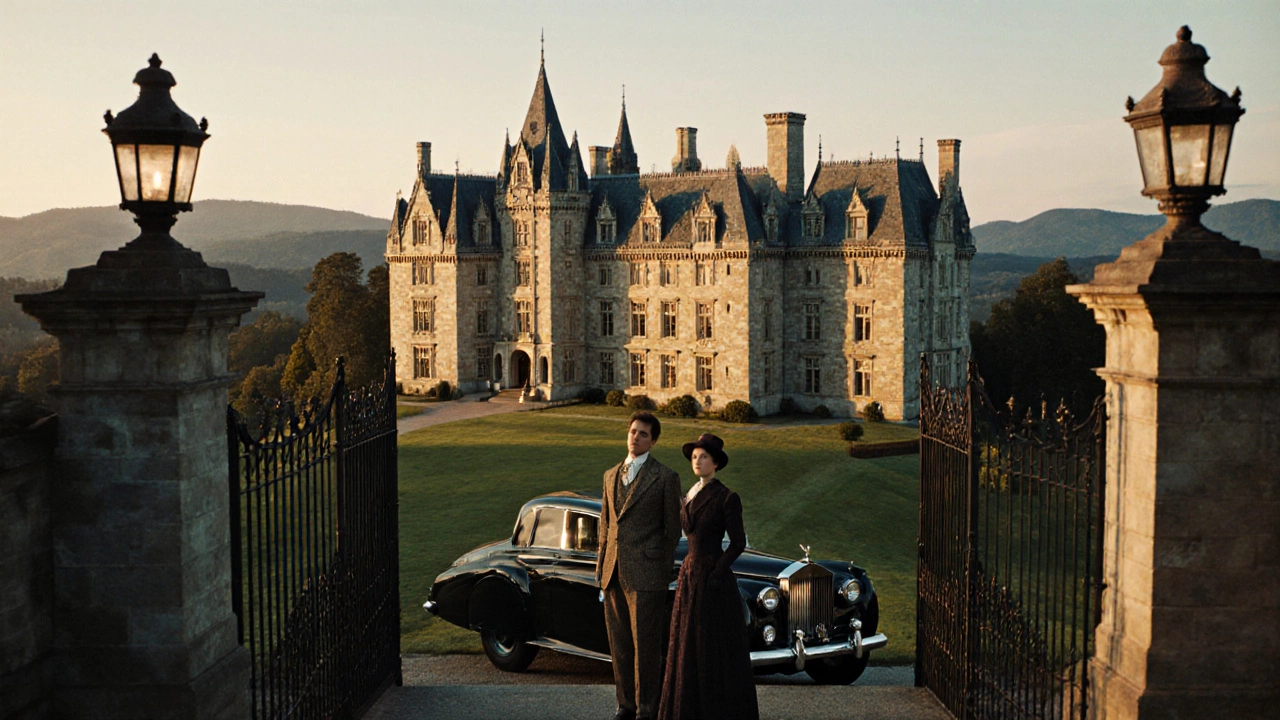Biltmore Estate Size Comparison Tool
See how the size of the Biltmore Estate compares to other famous American mansions.
Asheville, NC • Built 1895
Huntington, NY • Built 1932
San Simeon, CA • Built 1947
When you picture the biggest house USA, a massive stone mansion set amid rolling hills probably comes to mind. That title belongs to the Biltmore Estate, a 175,000‑square‑foot French‑Renaissance masterpiece built in the late 1800s. It isn’t just a tourist attraction - it’s a privately‑held family compound that has changed hands only once, staying within the Vanderbilt lineage. Below you’ll get the full story, from its origins to who actually runs the place today.
TL;DR
- The Biltmore Estate in Asheville, North Carolina, is the largest private residence in the United States.
- It was built by George Washington VanderbiltII between 1889‑1895.
- The estate is now owned and operated by The Biltmore Company, run by Vanderbilt descendants.
- The current chair is William A. V. Cecil, a great‑grandson of the original builder.
- Today the estate includes a winery, hotels, and 8,000 acres of forest, generating roughly $200million in annual revenue.
What Makes Biltmore the Biggest House?
At 175,000sqft (about 16,300m²) and 250 rooms, Biltmore dwarfs other American mansions. Its footprint covers 178 acres of landscaped gardens, while the entire property spans over 8,000 acres of forest, farmland, and vineyards. For comparison, the average U.S. home is just 2,500sqft. Biltmore’s size is not just about square footage - the estate includes multiple auxiliary buildings (a carriage house, staff quarters, stables, and a massive winery) that together form a self‑contained village.
History in a Nutshell
- 1889‑1895: George Vanderbilt commissions architect Richard Morris Hunt to design the house, hiring landscape architect Frederick Law Olmsted to plan the grounds.
- 1900: The estate opens to a limited number of guests; the Vanderbilt family lives there seasonally.
- 1940s‑1950s: After George’s death, his grandson Biltmore Sr. turns part of the property into a commercial venture, launching a winery.
- 1970s: The Biltmore Company is formally incorporated to manage the estate’s assets.
Through each generation, the property has remained within the family, passing from George to his son Cornelius, then to William Cecil, and now to his grandchildren.
Current Ownership Structure
The Biltmore Estate is not a publicly‑traded company; it’s a privately‑held corporation called The Biltmore Company. The board consists of four Vanderbilt descendants:
- William A. V. Cecil - Chairman and CEO, oversees daily operations.
- John F. Cecil - Vice‑President of Business Development.
- Virginia Cecil - Head of Guest Services.
- Michele Cecil - Director of Marketing & Communications.
How Biltmore Stacks Up Against Other Giant Homes
| Estate | Location | Square Footage | Year Completed | Current Owner |
|---|---|---|---|---|
| Biltmore Estate | Asheville, NC | 175,000sqft | 1895 | The Biltmore Company (Vanderbilt descendants) |
| Oheka Castle | Huntington, NY | 109,000sqft | 1932 | Luxury hotel group (private investors) |
| Hearst Castle | San Simeon, CA | 68,500sqft | 1947 | California State Parks (public) |
Even Oheka Castle - often touted as the largest private home on the East Coast - falls short by over 60,000sqft. Hearst Castle, while famous, is a public museum now.

Why Ownership Matters
Keeping the estate in the family has shaped its preservation philosophy. The Vanderbilt heirs treat the house as a living museum rather than a static monument. That means original furnishings, artwork, and architectural details are constantly maintained, and new revenue streams (wine, hospitality) fund restoration. If a corporate conglomerate owned it, the focus might shift to pure profit, potentially compromising historic integrity.
Visiting the Estate - What You’ll See
- Grand Hall: 70‑foot ceiling, a 27‑foot chandelier, and a marble stairway.
- Library: 10,000 books, hand‑carved oak shelves, and a rare 1761 edition of Goethe’s "Faust".
- Winery Tour: Walk through underground barrel rooms; taste the estate’s flagship Cabernet.
- Garden Walks: Olmsted‑designed landscapes, including a 10‑acre rose garden.
- Outdoor Activities: Horseback riding, hiking, and a 4‑hour zip‑line adventure.
Ticket prices fund ongoing preservation, so your admission directly supports the family’s stewardship mission.
Common Misconceptions
- “It’s open year‑round as a museum.” - The house is only open to the public MaythroughOctober; the rest of the year is private.
- “The Vanderbilt family sold it.” - It’s still in their hands, managed through The Biltmore Company.
- “It’s a single building.” - The estate comprises multiple structures spread across 8,000 acres.
What the Numbers Say
According to a 2023 financial report, The Biltmore Company generated US$200million in revenue, with the winery contributing the largest share (≈45%). The property employs over 1,200 staff members, making it one of the larger private‑sector employers in Western North Carolina. The estate’s landholdings include 5,000 acres of certified sustainable timber, providing another steady income stream.
Future Outlook
The current generation plans to integrate more sustainable practices: solar panels on outbuildings, organic farming for the winery’s grapes, and a carbon‑offset program for visitor travel. These initiatives aim to preserve the estate’s legacy while aligning with modern environmental expectations.
Frequently Asked Questions
Is the Biltmore Estate really the largest private home in the United States?
Yes. At 175,000sqft, it surpasses the next‑largest private residences by tens of thousands of square feet.
Who currently owns the estate?
The Biltmore Company, a privately‑held corporation run by Vanderbilt descendants, holds ownership.
Can I visit the house year‑round?
Public tours run from May to October. Outside that window the estate is private.
What revenue streams keep the estate afloat?
The winery, luxury hotel, dining venues, and retail shops generate the bulk of the $200million annual revenue.
How does the family ensure historic preservation?
Profits are funneled back into restoration, and the family maintains strict guidelines for any alterations to the original architecture.
